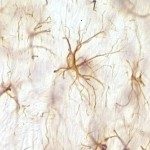Link to Pubmed [PMID] – 21610193
Glycobiology 2011 Dec;21(12):1570-9
Carbohydrates are likely to maintain significant conformational flexibility in antibody (Ab):carbohydrate complexes. As demonstrated herein for the protective monoclonal Ab (mAb) F22-4 recognizing the Shigella flexneri 2a O-antigen (O-Ag) and numerous synthetic oligosaccharide fragments thereof, the combination of molecular dynamics simulations and nuclear magnetic resonance saturation transfer difference experiments, supported by physicochemical analysis, allows us to determine the binding epitope and its various contributions to affinity without using any modified oligosaccharides. Moreover, the methods used provide insights into ligand flexibility in the complex, thus enabling a better understanding of the Ab affinities observed for a representative set of synthetic O-Ag fragments. Additionally, these complementary pieces of information give evidence to the ability of the studied mAb to recognize internal as well as terminal epitopes of its cognate polysaccharide antigen. Hence, we show that an appropriate combination of computational and experimental methods provides a basis to explore carbohydrate functional mimicry and receptor binding. The strategy may facilitate the design of either ligands or carbohydrate recognition domains, according to needed improvements of the natural carbohydrate:receptor properties.








